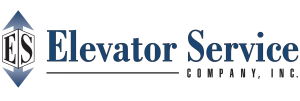LULA Elevators: What are they?
Although gaining popularity, the limited use, limited application (LU/LA) elevator is still unknown to many who might benefit from having one in their home or building. LULAs are ADA compliant and cost significantly less than a full commercial elevator.
Acceptable Uses for a LULA Elevator
There are several applications that can contain a LU/LA Elevator. The limited use part refers to building occupancy and rate load. Unlike a fully rated commercial capacity elevator, the LU/LA elevator’s rate load is 1400 lbs. The application part refers to the amount of rise the elevator is allowed to travel.
Can LULA Elevators be used in homes?
Yes they can! LULA elevators can be customized in different sizes, making them small enough to fit inside of a home.
Planning for a LULA Elevator
If you’re thinking about putting a LULA elevator in your project, here is a list of things you’ll need to know:
-13″ pit depth*
-106″ overhead*
-maximum rise 25 ft
-maintenance significantly lower than that of a commercial elevator
To get more information about LULA Elevators, please contact us today by phone at 203-757-5000 or email.
*differs by manufacturer


